
by David Levinson
A different kind of colonialism
When the Indian subcontinent gained independence, the Moslem and Hindu regions went their separate ways, contrary to the hopes of Gandhi. Hundreds of thousands of people were displaced, and there have been several conflicts between India and Pakistan over the border. But there is another problem which is beginning to make itself felt.
There are two Moslem regions of the subcontinent separated by India, and so Pakistan is split into East and West Pakistan—but unlike East and West Germany, they are a united country. The west comprises the Punjab and points west to Afghanistan, while the east is made up of eastern Bengal and the Ganges delta. West Pakistan holds a majority of the population and almost all of the political power.
East Pakistanis have felt increasingly marginalized in the twenty-two years since independence. As an example, the only official language is the western Urdu, which uses the Arabic script, while Bengali, with its own script and long literary history, is ignored. Civil unrest in the east has grown, led by the Awami League under the leadership of Sheikh Mujibur Rahman. They aren’t asking for full independence, merely autonomy with Pakistan becoming a federation of two nations with joint defense and foreign policy.
President Ayub Khan’s rule is becoming increasingly shaky. It is widely believed that the 1965 election was fraudulent and he actually lost. The military now supports Zulifikar Ali Bhutto, and there have been massive student protests in the last couple of years. Ayub Khan thought he had a way to regain support, but it seems to have blown up in his face.
 Ayub Khan greets LBJ in Karachi in 1967.
Ayub Khan greets LBJ in Karachi in 1967.
In January of last year, the government announced they had uncovered a plot for the secession of East Pakistan with the help of India. Over a thousand people were arrested, among them Sheikh Mujib. Originally, the plan was for a court-martial, but President Khan later opted for an open trial, perhaps thinking he could move public opinion his way before next year’s elections. As a result, the number of accused was reduced to 36.
The trial was set to begin in Dacca on February 6th, but public unrest resulted in a delay. Then on the 15th, Sergeant Zahurul Haq was shot and killed in his prison cell. When word got out, East Pakistan exploded. The rioters tried to set fire to the State Guest House where the judges and chief prosecutor were staying. The officials escaped, but some of the evidence was destroyed. A week later, the government dropped all charges, and the prisoners were released.
It’s a huge embarrassment for Ayub Khan, and it’s hard to see how he survives this politically. Meanwhile, Sheikh Mujib and the Awami League are riding high. Let’s hope that a peaceful resolution can be found.
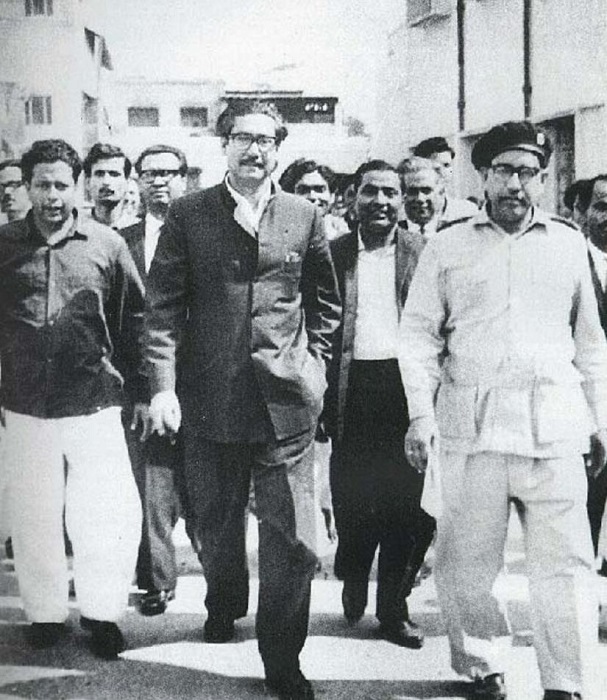 Sheikh Mujib (center) emerges from prison.
Sheikh Mujib (center) emerges from prison.
Science fantasy
And now, this month's first magazine, featuring (like the Pakistans) a single entity with two names—Worlds of IF and Worlds of Tomorrow.
Once upon a time, the term science fantasy was another name for science fiction. These days, it usually refers to work that combines elements of both science fiction and fantasy. Spaceships and magic, that sort of thing. This month’s IF runs strongly in that direction, starting with a new serial from one of that movement’s most prominent authors.
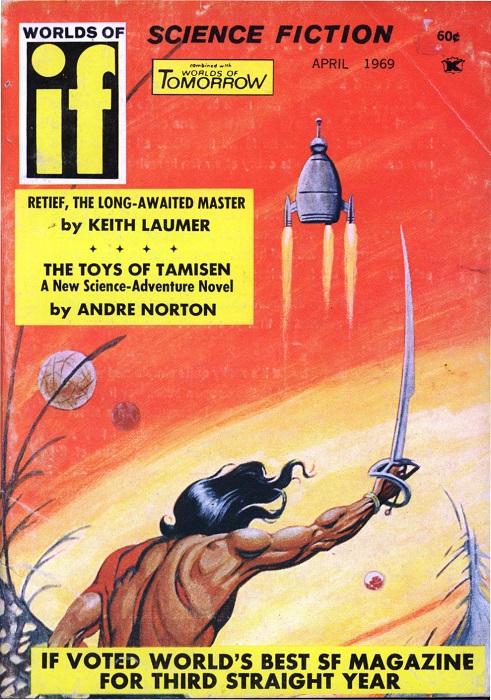 Like I said, swords and spaceships. Art by Adkins
Like I said, swords and spaceships. Art by Adkins
Continue reading [March 2, 1969] Dreams and reality (April 1969 IF)

![[March 2, 1969] Dreams and reality (April 1969 <i>IF</i>)](https://galacticjourney.org/wp-content/uploads/2024/02/IF-1969-04-Cover-491x372.jpg)
![[November 4, 1967] Conflicts (December 1967 <i>IF</i>)](https://galacticjourney.org/wp-content/uploads/2022/10/IF-1967-12-Cover-672x372.jpg)
 Joan Baez is arrested in Oakland.
Joan Baez is arrested in Oakland. Fr. Berrigan pouring blood into a file drawer.
Fr. Berrigan pouring blood into a file drawer. Futuristic combat in The City of Yesterday. Art by Chaffee
Futuristic combat in The City of Yesterday. Art by Chaffee![[July 4, 1967] Angels and Demons (August 1967 <i>IF</i>)](https://galacticjourney.org/wp-content/uploads/2022/06/IF-1967-08-Cover-645x372.jpg)
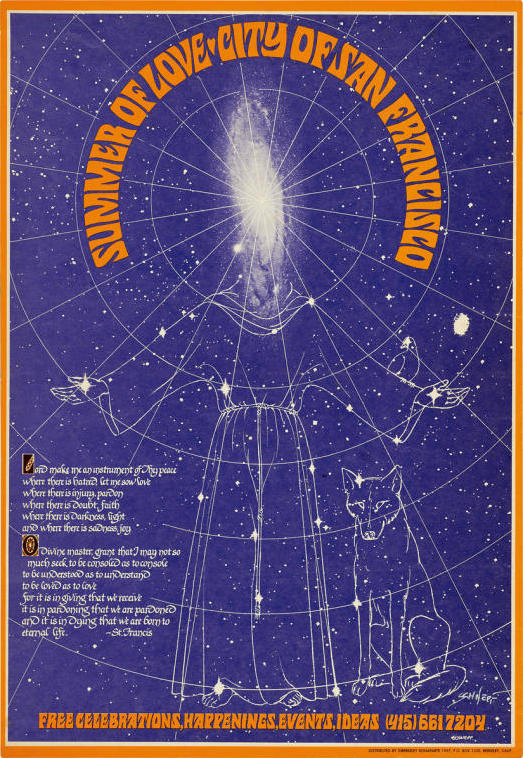 The official poster created by Bob Schnepf
The official poster created by Bob Schnepf The festival was delayed one week due to bad weather.
The festival was delayed one week due to bad weather. This poster is a good example of the new psychedelic art style.
This poster is a good example of the new psychedelic art style.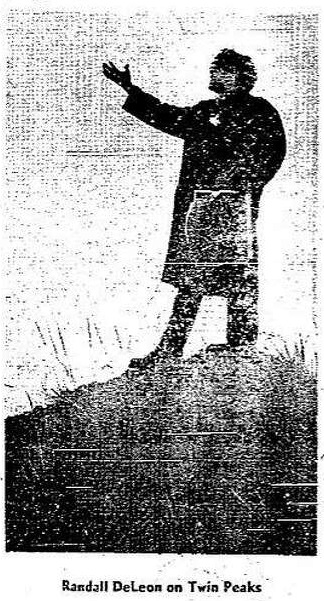 Hippie Randall DeLeon greets the sun and makes the front page of the San Francisco Chronicle.
Hippie Randall DeLeon greets the sun and makes the front page of the San Francisco Chronicle.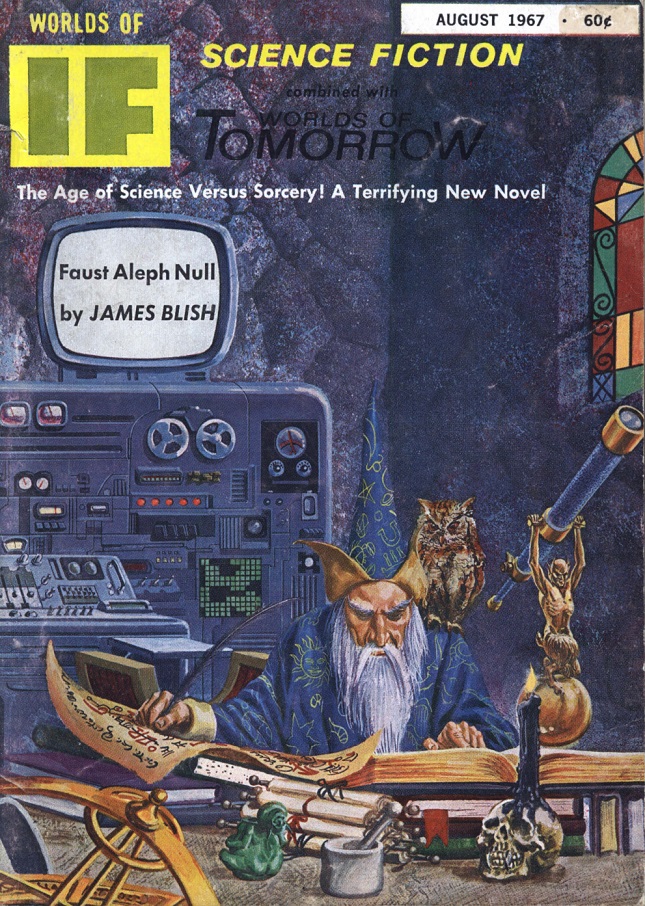 That’s not quite how black magic works in the new Blish novel, but it ought to be. Art by Morrow
That’s not quite how black magic works in the new Blish novel, but it ought to be. Art by Morrow